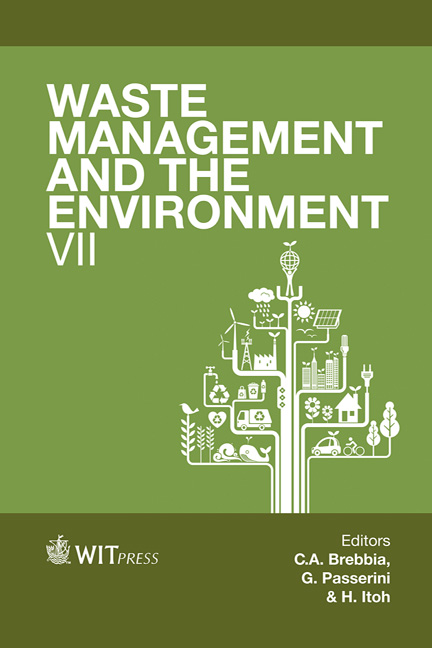The Pyrolysis And Gasification Of High Density Polyethylene In A Batch Reactor
Price
Free (open access)
Transaction
Volume
180
Pages
11
Published
2014
Size
724 kb
Paper DOI
10.2495/WM140071
Copyright
WIT Press
Author(s)
O. Klein-Bendavid, Y. Peled, D. Tavor, T. Ohaion, P. Elias & G. Bar-Nes
Abstract
Solid organic waste contaminated with radionuclides is a challenging wasteform in its raw state. NRCN, as the national repository for radioactive waste in Israel, accepts all such waste from industry, hospitals, universities and from the Israeli nuclear research centers. Organic waste is characterized by its high volume to weight ratio, together with the hazard of its radiolysis and consequently, the generation of combustible and explosive gases (e.g. H2 and light hydrocarbons). Thus, minimizing waste volumes together with stabilizing the wasteform are of high significance in the treatment of contaminated polymers. In this study, the thermal decomposition process is aimed at maximizing the room temperature gas yield, and minimizing the oil and wax fraction that will be harder to entrain in a large scale system. High density polyethylene (HDPE) is a thermoplastic polyolefin characterized by its high strength and diverse utilities. In the current research, we investigated the thermal decomposition of HDPE using thermogravimetric analysis (TGA) at the milligram scale; whereas a laboratory scale thermal decomposition system was utilized for experiments at the gram scale. The TGA method enables the study of the thermal decomposition parameters, whereas the macro-scale experimental system enables the study of the decomposition products (e.g. char, wax, oil and gas). Polymer decomposition was studied under variable atmospheres, ranging from pure pyrolysis, under a nitrogen atmosphere, to gasification under 88% nitrogen and 12% oxygen atmosphere in the macro-scale system (with a similar total gas flow rate). Only pyrolytic conditions were applied in the TGA
Keywords





